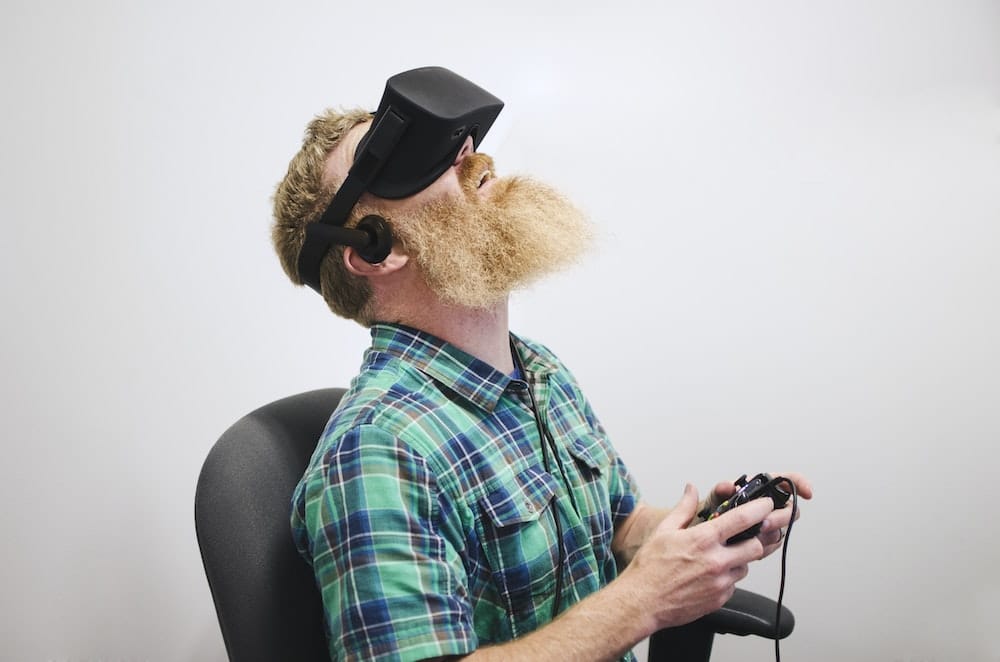As we continue to push the envelope in sports technology, the usage of virtual reality (VR) and augmented reality (AR) in training athletes is no longer a concept of the future, but a reality of the present. Particularly in sports that require precise decision-making under high pressure, such as football, AR provides an environment where athletes can practice and refine their skills. Quarterbacks, the field generals of the gridiron, can potentially benefit greatly from AR training. But how effective is this technology in enhancing cognitive decision-making?
The Study: Augmented Reality in Sports Training
Scholars and researchers have put this question to test, studying the impact of AR on quarterbacks. The game of football requires the quarterback to make split-second decisions based on rapidly changing situations on the field. The quarterback’s decision-making ability often determines the difference between a game-winning play and a disastrous turnover.
Also to discover : What Is the Role of Altitude Tents in Preparing Athletes for High-Altitude Competitions?
In a study published by Crossref, researchers provided quarterbacks with AR training, and then evaluated their performance on the field. This virtual environment simulated real game situations, providing players with real-time data and scenarios that they might face during games.
The quarterbacks were equipped with VR headsets, through which they saw a virtual football field, complete with opposing players. The AR software would then present different scenarios – such as an aggressive pass rush or a secondary in zone coverage – and the quarterbacks had to make the right decision based on what they saw.
Also to discover : What Are the Best Strategies for Improving Reaction Times in Table Tennis Players?
Technology: The Virtual Reality Environment
The virtual environment utilized in these studies is created with sophisticated software and hardware. The VR headsets not only provide the visual aspect of the simulation but also incorporate auditory cues to mimic the sounds of a real game. The result is a highly immersive experience that mimics the actual game environment.
In the AR training sessions, the quarterbacks would be placed in various game situations. They would see virtual representations of opposing players, complete with their movements and actions. The quarterbacks had to quickly process the information, decide on the best course of action, and execute the decision.
One of the advantages of this technology is that it allows for immediate feedback. The AR software can track the players’ decisions and actions, providing data on their performance. This data can then be analyzed to identify any areas of weakness or to evaluate the effectiveness of the training.
The Performance: Impact on Players
The use of AR in training athletes is still a relatively new concept. As such, the data and studies available are limited. However, preliminary findings suggest that AR training can indeed enhance the cognitive decision-making of quarterbacks.
Through AR training, quarterbacks can experience game situations in a controlled environment. They can practice making decisions under pressure, without the physical risks associated with actual gameplay. Over time, this can help improve their decision-making skills and performance on the field.
Moreover, the data collected from the AR training sessions can provide insights into the quarterbacks’ decision-making process. Coaches and trainers can use this information to provide targeted feedback and training, further enhancing the players’ skills and performance.
The Experience: Players and Coaches on AR Training
Feedback from players and coaches themselves provides valuable insights into the potential benefits of AR training. Many quarterbacks reported that the virtual reality training helped them to see the field better and make faster, more accurate decisions. Coaches also noted an improvement in their players’ decision-making skills, as well as their overall understanding of the game.
While the study conducted by Crossref provides promising data, it’s important to remember that AR technology is still relatively young. As technology improves and more research is conducted, we can expect to gain a better understanding of the true impact of AR on athletes’ performance.
It’s also worth noting that while AR can enhance training, it cannot replace traditional training methods. The physical aspects of the game, such as throwing and running, cannot be replicated in a virtual environment. Therefore, it is best used as a supplemental tool, in conjunction with traditional training methods, to maximize results.
Moving Forward: The Future of AR in Sports Training
The potential of AR in athletes’ training is immense. As technology continues to advance, we can expect to see more sophisticated AR training tools that offer even more realistic simulations. This technology could extend beyond football, to other sports that require quick decision-making, such as basketball or hockey.
Furthermore, as more data becomes available from studies and real-world applications, we can better understand the role AR plays in enhancing cognitive decision-making. This will enable us to optimize the use of this technology in sports training.
While AR technology is no magic bullet, it could play a crucial role in the future of sports training. As we continue to explore this exciting new frontier, we can look forward to seeing how AR shapes the athletes of tomorrow.
The Science Behind It: How AR Affects Cognitive Processes
Understanding the science behind augmented reality training can provide valuable insights into its effectiveness on cognitive decision-making. Key factors that influence a quarterback’s performance include memory, attention, and perception. As per recent research on Google Scholar, AR training can potentially enhance these cognitive abilities.
AR training offers a unique blend of real-world and virtual experiences. It allows athletes to engage in high-pressure game-like scenarios without the physical risk. This serves as a sort of mental rehearsal, where the athlete can practice decision-making skills in real-time. According to a study published on PubMed Crossref, such training can strengthen neural connections associated with memory and attention, thereby enhancing the cognitive processes involved in decision-making.
Additionally, AR training can hone perceptual-cognitive skills. These are the skills that allow athletes to quickly and accurately interpret the actions of opponents and teammates. In a sport like football, where understanding the movements and intentions of other players is crucial, this can be a significant advantage. A study on doi PubMed found that table tennis players who underwent AR training showed improved perceptual-cognitive skills, suggesting a potential benefit for quarterbacks as well.
Finally, data analytics play a crucial role in AR training. The ability to track, analyze, and feedback on an athlete’s performance in real-time can provide invaluable insights into their decision-making process. This gives coaches the information they need to tailor training to address specific weaknesses, further improving player performance.
The Bigger Picture: AR and the Future of Sports
As advanced as AR technology is, it’s still in its early stages. Future developments promise to bring even more sophisticated and realistic virtual environments, potentially revolutionizing sports training.
Consider the possibilities. As per a study on Crossref Google, AR could be used to simulate the pressure of a crowd, the weather conditions, or even specific opponents. This level of detail would provide a training experience far beyond what’s currently available.
Moreover, the impact of AR is not limited to football. Any sport that requires fast decision-making could benefit from this technology. Basketball players could practice identifying defensive schemes, while hockey players could work on their puck handling under pressure.
Furthermore, AR could also be used for injury prevention and rehabilitation. According to a paper on Psychol doi, the technology could simulate movements and motor skills, providing a safe environment for athletes to regain their strength and confidence after an injury.
As we look ahead, it’s clear that we’re just scratching the surface of AR’s potential. The combination of immersive virtual reality, real-time data analytics, and cognitive training could reshape the way athletes train, enhancing not only their decision-making but their overall performance as well.
Conclusion: The New Frontier in Sports Training
Augmented Reality is poised to become a game-changer in the world of sports training. It’s not about replacing traditional methods, but rather enhancing them. The combination of physical training with AR could provide a more holistic, effective approach to developing athletic prowess.
While the research is still in its early stages, the possibilities are exciting. Preliminary findings suggest that AR training can enhance cognitive decision-making in quarterbacks, potentially giving them a significant edge on the field. As the technology continues to evolve, we can only expect these benefits to grow.
The future of sports training is exciting, and AR is at the forefront, ushering in a new era of extended reality in sports. This technology is more than just a tool; it’s a new frontier in sports training, one that promises to push the boundaries of athletic performance and redefine what’s possible.
















